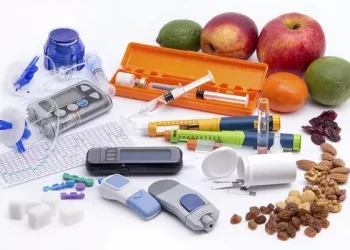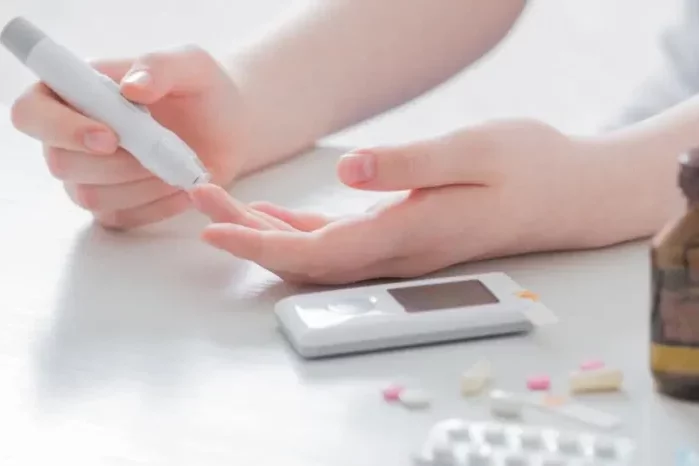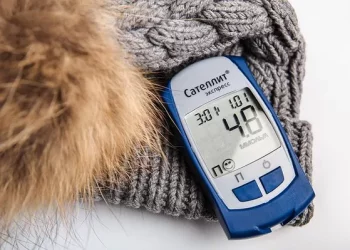When blood sugar levels drop below 70 mg/dL (3.9 mmol/L), immediate action becomes crucial for preventing serious complications. The foods you choose during these moments can significantly impact how quickly and effectively you recover. This comprehensive guide outlines the most effective dietary strategies for treating hypoglycemia, based on current medical understanding of glucose metabolism and absorption. We’ll explore both rapid-acting solutions for emergency situations and balanced approaches for sustained recovery, helping you make informed decisions when every second counts.
The 15-15 Rule
The American Diabetes Association’s 15-15 rule remains the gold standard for treating mild to moderate hypoglycemia. This scientifically validated approach involves consuming exactly 15 grams of fast-acting carbohydrates, then waiting precisely 15 minutes to recheck your blood sugar. The precision of this method serves two vital purposes: it provides enough glucose to correct low blood sugar while minimizing the risk of overcorrection that could lead to rebound hyperglycemia. This systematic approach works because 15 grams of simple carbohydrates typically raises blood glucose by about 50 mg/dL (2.8 mmol/L) in most adults, though individual responses may vary based on factors like body weight and insulin sensitivity.
Glucose Tablets
Specially formulated glucose tablets offer the most reliable and precise method for treating hypoglycemia. Each tablet typically contains exactly 4 grams of pure dextrose, allowing you to easily calculate your intake (usually 3-4 tablets for 15 grams). Their rapid dissolution rate ensures quick absorption through the mucous membranes, beginning in the mouth and continuing in the stomach. Unlike food products, they contain no protein or fat that might delay absorption, and their standardized formulation eliminates guesswork about carbohydrate content. Their portability and long shelf life make them ideal for keeping in your pocket, car, or bedside table.
Fruit Juice
Natural fruit juices can serve as effective hypoglycemia treatments when measured carefully. A 4-ounce (120ml) serving of most 100% fruit juices contains approximately 15 grams of carbohydrates, primarily in the form of easily absorbed fructose and glucose. Orange juice is particularly effective due to its consistent carbohydrate content and rapid absorption rate. However, it’s crucial to use measuring cups rather than drinking directly from the container, as uncontrolled portions often lead to excessive sugar intake and subsequent hyperglycemia. Always choose juices without added sugars or sweeteners, and remember that whole fruits aren’t suitable for acute hypoglycemia treatment due to their fiber content slowing absorption.
Regular Soda
In situations where more ideal treatments aren’t available, regular (non-diet) soda can serve as an emergency hypoglycemia remedy. Half a cup (120ml) of most sugar-sweetened sodas contains about 15 grams of rapidly absorbed high-fructose corn syrup or sucrose. The carbonation actually enhances absorption by stimulating gastric emptying, though this same property can sometimes cause temporary stomach discomfort. This should be considered a last-resort option rather than a primary treatment, as soda provides no nutritional value beyond sugar and may contribute to dental erosion and other health issues with frequent use.
Honey
Natural honey offers a concentrated source of simple sugars that can effectively treat hypoglycemia. One tablespoon (about 21 grams) contains approximately 17 grams of carbohydrates in a roughly 1:1 ratio of fructose to glucose. Its thick consistency allows for sublingual administration (under the tongue), where some absorption can occur directly into the bloodstream, potentially speeding recovery. However, honey’s sticky nature makes precise dosing challenging outside controlled settings, and its calorie density requires caution to avoid overconsumption. Raw, unpasteurized varieties may offer additional health benefits but don’t absorb any faster than processed honey for hypoglycemia treatment.
Smart Candy Choices
Certain types of candy can serve as effective hypoglycemia treatments when selected carefully. Plain sugar candies like jelly beans (4-6 pieces) or gummy bears (5-7 pieces) typically provide about 15 grams of fast-acting carbohydrates without significant fat or protein that might delay absorption. Hard candies can work but take longer to consume completely. A tablespoon of granulated sugar dissolved in water creates an effective sugar solution. Crucially, avoid chocolate-based candies – while tempting, their fat content significantly slows carbohydrate absorption, making them ineffective for acute hypoglycemia treatment despite their sugar content.
Dried Fruits
Dried fruits offer a more nutrient-dense option for hypoglycemia treatment when fresh options aren’t available. Two tablespoons of raisins (about 30 grams) provide approximately 15 grams of carbohydrates in a compact, portable form. Dried apricots (3 halves), cranberries, or dates can also work, though their exact carbohydrate content varies more significantly by variety and preparation method. The natural sugars in dried fruits (primarily fructose and glucose) absorb nearly as quickly as refined sugars, though the small amounts of fiber and nutrients may cause slightly slower absorption compared to pure glucose products. Always check portion sizes against nutrition labels to ensure accurate carbohydrate counting.
The Follow-Up Meal
After initial treatment with fast-acting carbohydrates, consuming a balanced snack within 30 minutes helps stabilize blood sugar and prevent recurrence. This follow-up meal should combine complex carbohydrates with protein and healthy fats to create sustained glucose release. Good options include whole grain crackers with peanut butter, a small sandwich with lean protein, or yogurt with nuts. The protein and fat help slow digestion of the carbohydrates, while the complex carbs provide a steadier glucose release than simple sugars. This step is particularly important for individuals on long-acting insulin or sulfonylureas, which may continue lowering blood sugar after the initial hypoglycemia is corrected.
Milk
One cup (240ml) of cow’s milk serves as an effective hypoglycemia treatment with added nutritional benefits. The natural lactose (milk sugar) provides about 12 grams of carbohydrates that absorb relatively quickly, while the protein content (about 8 grams per cup) helps sustain blood sugar levels after the initial rise. Milk also contains valuable nutrients like calcium and vitamin D that support overall health. For faster absorption, choose low-fat or skim varieties rather than whole milk, as the reduced fat content allows quicker gastric emptying. Lactose-free milk works equally well, as it contains the same carbohydrate content in pre-digested form. Those who don’t consume dairy can use unsweetened soy milk as a comparable alternative.
Sports Drinks
Properly formulated sports drinks can serve as effective hypoglycemia treatments when chosen carefully. Look for products containing about 15 grams of simple carbohydrates (typically sucrose and/or glucose) per 8-ounce serving, without artificial sweeteners. These beverages are specifically designed for rapid fluid and carbohydrate absorption, often containing electrolytes that may help with overall recovery. However, many “low-calorie” or “zero” versions won’t help hypoglycemia, and some energy drinks contain stimulants that could mask hypoglycemia symptoms. Always check labels to confirm carbohydrate content and avoid products with excessive caffeine or other additives.
Emergency Glucose Gel
Pre-measured glucose gel tubes provide an excellent solution for situations where swallowing is difficult or unsafe. These products typically contain 15 grams of pure glucose in a thick gel that can be administered directly into the mouth, including under the tongue for partial buccal absorption. The gel formulation prevents choking hazards that might occur with liquids in altered mental states, making them particularly valuable for severe hypoglycemia. Many formulations include vitamin C or other additives that don’t interfere with absorption but may affect taste. Keep multiple tubes in accessible locations, and check expiration dates regularly as the glucose can crystallize over time.
What NOT to Use for Immediate Treatment
Several common but inappropriate foods can actually hinder hypoglycemia recovery. Chocolate and chocolate-based candies are problematic because their high fat content dramatically slows sugar absorption. Protein bars or nuts provide no significant fast-acting carbohydrates despite their energy density. Diet drinks and artificially sweetened products contain no usable glucose. High-fiber foods like whole fruits or granola bars digest too slowly. Alcohol should never be used as it inhibits the liver’s glucose production. Even some “healthy” sweeteners like agave nectar or coconut sugar absorb too slowly for acute treatment. Understanding these ineffective options is just as important as knowing the effective ones.
Conclusion
Effective hypoglycemia management requires both knowledge and preparation. Keep appropriate treatments readily accessible in all locations where you spend time – home, workplace, vehicle, and travel bags. Regularly rotate and check expiration dates on emergency supplies. Always follow up initial treatment with blood glucose monitoring and a balanced snack when possible. Work with your healthcare provider to personalize your treatment plan based on your specific medications, typical activity patterns, and individual glucose responses. Remember that while quick treatment is essential, understanding your body’s patterns and preventing lows through consistent eating schedules and careful medication management remains the ultimate goal for long-term diabetes control.






















